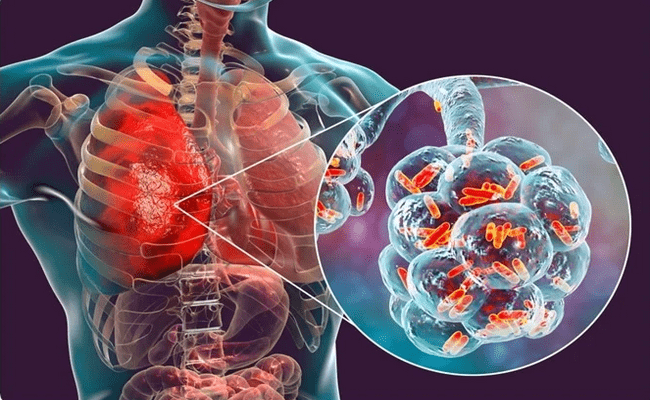What is Pneumonia Disease?

Complications of Pneumonia Disease:
All the complications of pneumonia disease have pointed out below:
- Empyema,
- Pleural effusion,
- Bronchiectasis,
- Bacteremia,
- Septicemia,
- Collapse,
- Lung abscess,
- Subcutaneous emphysema,
- Metastatic spread: Meningitis, septic arthritis, osteomyelitis.
The severity of pneumonia is classified according to the world health organization (WHO), which represents in the below:
1. Severe pneumonia or very severe pneumonia:
Sign or Symptoms:
General danger sign chest in-drawing, Stridor in a calm child.
Treatment:
- Urgent referral to hospital after giving 1 dose of antibiotics.
- Advice frequent feeding on the way.
2. Pneumonia:
Sign or Symptoms:
Fast breathing
Treatment:
- Oral antibiotics for 5 days.
- Supportive care at home.
- Advice to follow up as recommended.
3. No pneumonia, Cough, or cold:
Sign or Symptoms:
No signs of severe or non-severe pneumonia.
Treatment:
- Supportive care at home.
- Advice to follow up as recommended.
Nursing Management of Pneumonia:
Various nursing management ways have discussed in the following:
1. To improve airway patency:
It includes-
- Removal of secretions: Secretions should be removed because retained secretions interfere with gas exchange and may slow recovery.
- Adequate hydration of 2 to 3 liters per day thin and loosens pulmonary secretions.
- Humidification may loosen secretions and improve ventilation.
- Coughing exercise: Directed cough can also develop airway patency.
- Chest physiotherapy: It is very important because it mobilizes and loosens.
2. To promote rest and conserve energy:
It includes-
- Encourage avoidance of overexertion and possible exacerbation of symptoms.
- Semi-flower’s position: The patient should assume a comfortable position to promote rest and breathing and should change positions frequently to enhance secretion clearance and pulmonary ventilation and perfusion.
3. To promote fluid intake:
Fluid intake: Increase the fluid intake to at least 2 liters per day to replace insensible fluid losses.
4. To maintain Nutrition:
It includes-
- Fluids with electrolytes: This may help to provide fluid, calories, and electrolytes.
- Nutrition-enriched beverages: Nutritionally enhanced drinks and shakes can also help to restore proper nutrition.
5. To promote patients knowledge:
It includes-
- Instruct patient and family about the cause of pneumonia, management of symptoms, signs, and symptoms, and the need for follow-up.
- Suggest to the patient about the factors that may have contributed to the development of the disease.
More questions related to this topic:
The below questions are totally related to the article topic.
- Define pneumonia.
- What do you mean by pneumonia disease?
- What are the common complications of pneumonia disease?
- Explain the nursing management of pneumonia disease?
- Discuss nursing management of pneumonia in pediatrics.
- Describe pediatric pneumonia guidelines.
- Describe the nursing care plan for pneumonia disease.
- How do you care for someone with pneumonia?
- Discuss nursing care plan for the lung abscess.

Maria Khatun Mona is a Founder and Editor of Nursing Exercise Blog. She is a Nursing and Midwifery Expert. Currently she is working as a “Senior Staff Nurse” at “Dinajpur Medical College Hospital”, Bangladesh. She has great passion in writing different articles on Nursing and Midwifery. Mail her at “maria.mona023@gmail.com”
